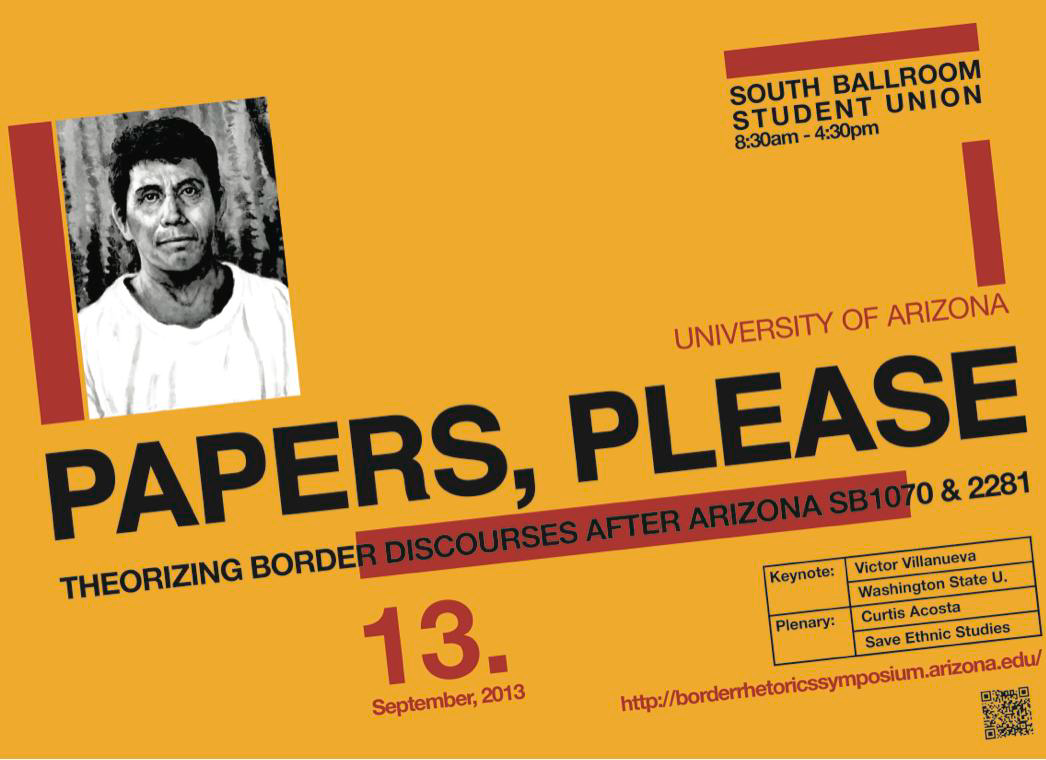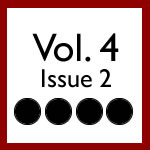Book Review: Hulan, McArthur, and Harris’ Literature, Rhetoric and Values
Hulan, Shelley, McArthur, Murray, and Randy Allen Harris, eds. Literature, Rhetoric and Values: Selected Proceedings of a Conference held at the University of Waterloo, 3-5 June 2011; Newcastle upon Tyne: Cambridge Scholars Publishing, 2012. Print.
 In their introduction, the editors suggest that the conference staged a forum in which participants could “debate” the “nexus of literature and rhetoric with values.” The editors broadly define “values” as “the principles and beliefs that matter most to human beings and that they use as guides to acting appropriately in the world” (1). Given such a broad definition, it is perhaps no surprise that the topic of values in each essay takes a number of different forms, ranging from considerations of ethical or moral behavior to issues of ideology and even economic value. The editors are quite right in arguing that both literature, because of its speculative qualities, and rhetoric, because of its overt concern with “suasion in all its manifestations” (7), have a particular connection to the issue of values.
In their introduction, the editors suggest that the conference staged a forum in which participants could “debate” the “nexus of literature and rhetoric with values.” The editors broadly define “values” as “the principles and beliefs that matter most to human beings and that they use as guides to acting appropriately in the world” (1). Given such a broad definition, it is perhaps no surprise that the topic of values in each essay takes a number of different forms, ranging from considerations of ethical or moral behavior to issues of ideology and even economic value. The editors are quite right in arguing that both literature, because of its speculative qualities, and rhetoric, because of its overt concern with “suasion in all its manifestations” (7), have a particular connection to the issue of values.
Describing the manner in which literature and rhetoric share common ground, the editors briefly trace the history of their split into two distinct fields in North American educational practice in the early 20th century. They then suggest that their conference and collection seeks to contribute to a recent “interdisciplinary rapprochement” between these two divided disciplines. Interestingly enough, though, the essays included in the volume never actually address either the split or the so-called rapprochement between literature and rhetoric; indeed the “debate” identified by the editors remains absent from all of the essays, though it may have happened at the conference. Rather, each of the essays addresses (for the most part) either literature and values or rhetoric and values, though they are not overtly organized according to such categories.
The opening essay by Sarah Hart, “Rhetorics of Loss: Values of Absence and Affect in Frost and Dickinson,” argues for the epideictic function of poetry, particularly in cases of mourning, illustrated by examples from Frost and Dickinson. Hart begins by noting the surge in the popularity of poetry as mode of consolation after the terrorist attacks of 9/11/01. In explanation of this phenomenon, Hart nods toward Jeffrey Walker’s work on ancient Greek poetry and epigrams (Rhetoric and Poetics in Antiquity), in which he argues that epigrammatic poetry functioned as both consolation to mourning and “a kind of epideictic argument” (13). Taking this connection as a starting point, Hart turns to the poetry of Frost and Dickinson to assert that “contemporary” lyric poetry about loss “can and does function epideictically, especially for audiences coping with personal and communal losses such as 9/11” (13-14). Hart argues that the poetry of both Dickinson and Frost displays epideictic conventions in order to represent a significant absence in the poetic speakers in the poems she addresses: the lack of the particularly human and alive quality of emotion. For Hart, this absence reflects an important loss: the loss of “creative agency,” which she suggests (citing Levinas) is akin to death. The problem here is that Hart’s argument depends upon a reductive literal reading of Levinas; the argument turns, in general, upon an idea of “humanity” that remains undefined. The readings of Frost and Dickinson that follow are motivated by an emotional lack that Hart argues reflect the absolute loss of death, thus “inviting mournful responses in their implied readers…” (19). In this way, the poems invite their audience to compensate for what is missing in an engagement of their own “human agency” (23). While Hart’s argument might be more persuasive if made in terms of close readings of the poems rather than a reliance on Walker, Levinas, and other scholars, Hart’s rhetorical critical interest in relationships between speakers and listeners, the poem and its audience, throws an interesting light upon the function of lyric poetry as a mode of consolation.
The manner in which literature expresses and apparently gains value by means of epideictic characteristics similarly motivates Danielle Koupf’s essay “David Shields’s Reality Hunger and the Value of Textual Recycling” (Chapter Two). In this case, Koupf makes it clear that she is examining this text’s rhetorical dimensions to demonstrate its (literary) value. In its manner of exhibition and performance, Koupf concludes, Reality Hunger reflects characteristics of epideictic rhetoric—but at the same time, she continues, the text’s arguments might also be categorized as judicial or deliberative rhetoric. Whatever the category, the text’s rhetorical characteristics encourage an active engagement on the part of its readers, who, in engaging with this innovative text, must reconsider and reflect upon their strategies as both writers and readers. While such an active participation might seem inappropriate in a literary text, Koupf notes, one might rather view Reality Hunger in terms of intervention and invention, likewise prompting similar invention in its readers. Koupf concludes that among the many categories in which Shields’ text might be placed, it aptly fits the model of rhetorical criticism; for Koupf, this category conclusively provides the text’s ultimate value.
Chapters Three, Four, and Six likewise find rhetorical value in works of literature. Robert Clapperton argues that Don DeLillo’s novel White Noise presents human life and death as framed by technology and consumerism—a frame which produces a kind of analytic humanism expressed by a narrative driven by (and reflective of) the consequent contingencies of such a postmodern world. The consumer- and technology-driven world that the characters of White Noise inhabit, in other words, reflects a rhetoric of contingency that challenges “values of self-worth by motivating forgetfulness and distracting from the awareness of life’s finitude” (46). As Clapperton notes, the novel seems obsessed with death while never actually being disrupted by the event of death. Rather, the fear of death—which hovers around the various contingencies that occur in the narrative—drives the plot. Clapperton reveals this function by approaching the novel through the lens of rhetorical criticism.
Similarly, Alla Ivanchikova examines the difference between the construction of fundamentalist identities in two contemporary novels: Monica Ali’s Brick Lane (2003) and Elena Chudinova’s 2048: The Mosque of Notre Dame de Paris (2005). Both novels feature characters who are political activists and religious fundamentalists. Ivanchikova explores in her essay how both novels address “the panic regarding the rise of Islamic fundamentalism in Europe…” (59). Comparing the two texts, Ivanchikova suggests that Ali sees literature as having the potential to deconstruct fundamentalist attitudes and create the space for change or progress. On the other hand, Chudinova, according to Ivanchikova, sees literature as a vehicle for the construction of fundamentalist attitudes and the propagation of conflict. Ultimately, Ivanchikova concludes therefore that Chudinova’s novel is “unsuccessful as a work of literature because . . . it fails to address the real vicissitudes of cross-cultural interaction and conflict in today’s world” (68). In this case, Ivanchikova seems to be viewing literature only in terms of its rhetorical capacities.
Also reading a literary text in terms of its rhetorical potential, Michael Sloane posits a “scrap poetics” that informs select contemporary North American poetry, represented in “a relation between refuse and representations of refuse” (85). Through innovations of language and space, these poems present the idea of waste in ways that force us to reconsider its relation to the human species and our relation to refuse. As such, Sloane argues, scrap poetics is a “catalyst” that forces us to reconsider garbage and to respond to it.
Chapter Five, on the other hand, offers a literary comparison that utilizes rhetorical principles to provide provocative insight into the function of a literary text and its engagement with ideological values. Andrew McMurry explores the function of hope as a topos in Children of Men and The Road. As McMurry suggests, “Hope is a form of secular prayer, and, like prayer, it off-loads responsibility onto an external agency, namely, futurity, which is presumed to hold the solutions to problems that would cost the here and now too dearly to face” (73). McMurry divides apocalyptic narratives into two sub-genres: “those that portray the end as a prelude and those that portray it as a coda” (76). The Road and Children of Men, he notes, seem at first to fall into the latter, “hopeless,” category. Yet these, too, ultimately leave a space for hope, driven by an ideological concern with sustaining our desires. In this manner, The Road and Children of Men adhere to the ideological principles driving our culture and its products today, McMurry argues, by means of inopinatum, a rhetorical strategy whereby an unthinkable concept is articulated in order to disavow it. Thus in these two works, the end of the world is posited but ultimately its threat diminishes in the face of hope. This ideologically-driven hope, McMurry argues, enables audiences to continue in the cycle of production and consumption that must ultimately lead to the apocalyptic scenarios the two works envision—but scenarios that in real life hold no hope of positive resolution.
In Chapter Seven, Amy Larsen’s essay on two graphic novels, J. P. Stassen’s Deogratias: A Tale of Rwanda and Rupert Bazambanza’s Smile Through the Tears, also explores the rhetorical strategies surrounding speaking the unspeakable—in this case, the trauma of genocide. She argues here that the value of a fictional depiction of genocide resides in the extent to which they trouble our assumptions about how and why the trauma should be remembered. In essence, she ultimately suggests that these two graphic novels are rather complementary: while Deogratias creates empathy for both victim and perpetrator while maintaining a sense of culpability, it must also be read with a survivor text such as Smile Through the Tears. Larsen’s point here seems to be that the manner in which Deogratias troubles narrative expectations is both productive (i.e., it troubles the reader’s consciousness and prompts ethical exploration) and limited, in that it refuses to implicate those who are culpable in the genocide. The productivity of the text might be viewed as its literary function; its weakness lies in its rhetorical function. Thus, for rhetorical value, Larsen suggests reading an ambiguous work like Deogratias, which reflects both the complexity of history and the complications of recounting a traumatic memory, alongside Smile Through the Tears, whose ethical stakes are clear and overt.
Moving away from the literary in her formalist approach, Carolyn R. Miller in her essay “New Genres, Now and Then” (Chapter Eight) examines genre as a means of finding a productive relationship between tradition and innovation. Viewing genres as “vernacular rather than theoretical constructs” (130), Miller examines how the discussion of “new genres” or genres in general function as a means to categorize entertainment commodities, particularly in the advent of new media. However, she continues, the prominence of genre considerations proliferated in the dawning age of print media, as well. Now as in the Renaissance, she demonstrates, discussion of genre seems to enable people to explore the relation between tradition and innovation, easing the tension between the apparent contradiction inherent in any new media, which utilizes radically innovative form to satisfy traditional expectations of communication.
In Chapter Nine, Sara Humphreys considers a much different form of media in her discussion of artifacts dedicated to the memory of Hannah Duston. Recounting the history and legend surrounding Duston’s life and the memorials dedicated to her, Humphreys argues that Duston’s exploits function on a mythic-historic level that narrate and instantiate nationalist ideologies. Humphreys argues that Burke’s theories of communication are a necessary supplement to Brown’s attempt to make things “active agents rather than mute objects” (154). Employing Burkean principles of transformation, Humphreys categorizes memorial sculptures and other commemorative objects as “literary” and in this manner casts them as agents in a rhetorical situation; Burke’s theories thus enable Duston and her Indigenous captors to be placed in dialectical relation rather than binary opposition by reflecting the evolution of their performance across history, revealing the biases and prejudices of the dominant white culture that have drowned out the possibility of oppositional exchange in the dissemination of this narrative. Humphreys shows through aesthetic and rhetorical critique how Duston’s memory has been constructed to communicate and sustain a nationalist message of white supremacy and Native American savagery.
Moving forward from this more subtle depiction of historical conflict, Chapters Ten through Twelve address war and rhetoric. In Chapter Ten, Lydia Wilkes compares the video game Call of Duty: Modern Warfare 3, which purports to represent the experience of the recent war in Afghanistan, to a first person narrative account of the war, Colby Buzzell’s My War: Killing Time in Iraq, in terms of their “authenticity effects”: “aspects of the text which persuade audiences of the text’s truthfulness and/or verisimilitude” (173). In Wilkes’ argument, authenticity effects, as a form of rhetorical persuasion, determine a text’s value. Wilkes argues strongly that “we should value those representations of war which solemnly acknowledge rather than giddily celebrate the destruction that war causes…” (172). While the video game’s depiction of war clearly falls into the latter category, Wilkes suggests that Buzzell’s first-person account provokes with its specific details and honesty of feeling an empathetic response in military and civilian audiences. Thus, Wilkes concludes, first-person narratives are more “authentic” and should thus be valued highly as a means of persuasion for understanding the experience of war. Unlike Larsen, Wilkes’ essay unfortunately favors a sense of certainty over the kind of ambiguity that allows for complexity or a range of perspectives.
In Chapter Eleven, Michael MacDonald makes a case for the importance of rhetoric in contemporary warfare, arguing that rhetorical discourse, the importance of public opinion in democratic countries waging war, and particularly the lightning-speed movement of vast quantities of information (Info War), are a major part of warfare now. MacDonald concludes by suggesting that the prevalence of rhetoric in war, or “this battle of rhetoric against rhetoric,” may necessitate a rather sophistic approach to rhetorical persuasion and rhetorical critique.
Finally, in “Coercive Information: Rhetorics of Digital Torture,” Christine Horton makes the somewhat obvious point that the United States tortures enemy combatants in order to gather information for analysis. Recounting the by now well-known argument of Elaine Scarry, that torture destroys both the body and reason, Horton leaps to the conclusion that “By deconstructing the subject . . . torture also deconstructs the values of the state through the negation of these principles” (223). In other words, the U.S. calls its ethos into question by participating in torture—a point that has also been made in a range of texts and venues since Pres. George W. Bush’s declaration of the War on Terror in January 2002. Horton then argues that “since conventional torture theory views the body solely as an autonomous individual, how torture deconstructs the culturally constituted individual remains unacknowledged” (225). Even a cursory reading of the documents surrounding the U.S. practice of torture1 refutes this statement. Indeed the photos that emanated from Abu Ghraib alone make it clear that American acts of torture and abuse of enemy combatants were targeted specifically at the culturally constituted individual.2 However, Horton’s concern is with torture’s “dehumanizing” function, since ultimately her critique of torture is oriented around coming up with a better solution. A number of similar leaps in logic or misconceptions weaken Horton’s prescriptive argument, which ultimately posits that torture can be responsibly and ethically practiced in a liberal democracy if the subject or victim of torture is re-conceptualized in terms of his or her relation to knowledge and power (233).
While the essays range widely in topics and relevance, the collection offers a glimpse of the diversity of work being done in rhetorical theory and criticism today. Some of the essays show a clear interest in crossing the “divide” between literature and rhetoric. The two fields have evolved distinctly for almost a century now, however, and, as this collection attests, the process of bringing them back together—which is a valid and sensible goal—may be a longer conversation than one might expect. We might take this collection as both an indication of some of the hurdles that may lie in the path of such a reunion but also as a positive first step in what will hopefully be between the two fields a dialogue of growing complexity and sophistication.
Endnotes
- See, for example, Mark Danner, Torture and Truth: America, Abu Ghraib, and the War on Terror (NY: New York Review of Books Press, 2004); or Karen J. Greenberg and Joshua L. Dratel, eds., The Torture Papers: The Road to Abu Ghraib (Cambridge: Cambridge UP, 1995). return
- See, for example, Seymour M. Hersh, Chain of Command: The road from 9/11 to Abu Ghraib (NY: HarperCollins Publishers, 2004) or Errol Morris’ documentary film, Standard Operating Procedure (Sony Pictures, 2008). return




 Jennifer Ballengee is a Professor of English and Comparative Literature at Towson University. Her publications, including The Wound and the Witness: The Rhetoric of Torture (SUNY 2009), address questions of the body, politics, rhetoric, and representation. She is currently finishing a monograph on ruins and the performance of national ideology.
Jennifer Ballengee is a Professor of English and Comparative Literature at Towson University. Her publications, including The Wound and the Witness: The Rhetoric of Torture (SUNY 2009), address questions of the body, politics, rhetoric, and representation. She is currently finishing a monograph on ruins and the performance of national ideology.